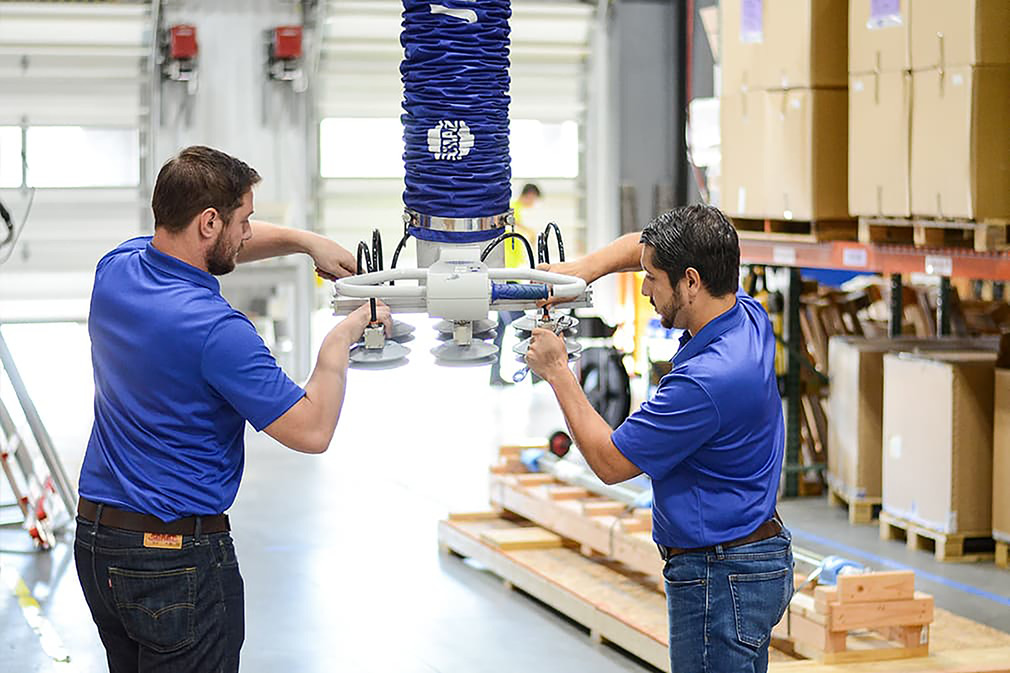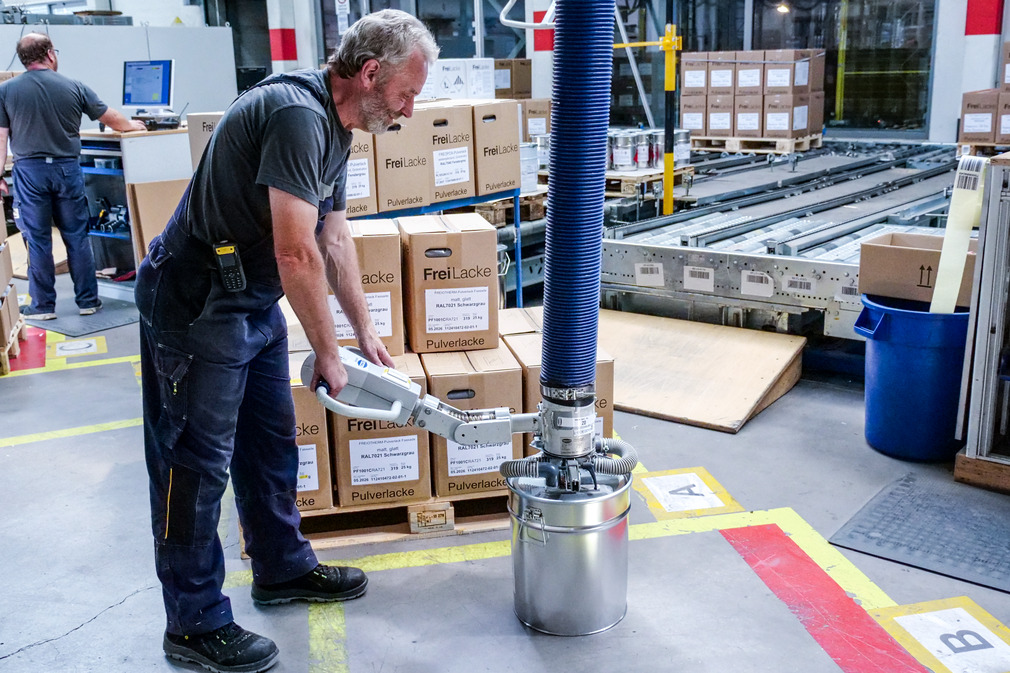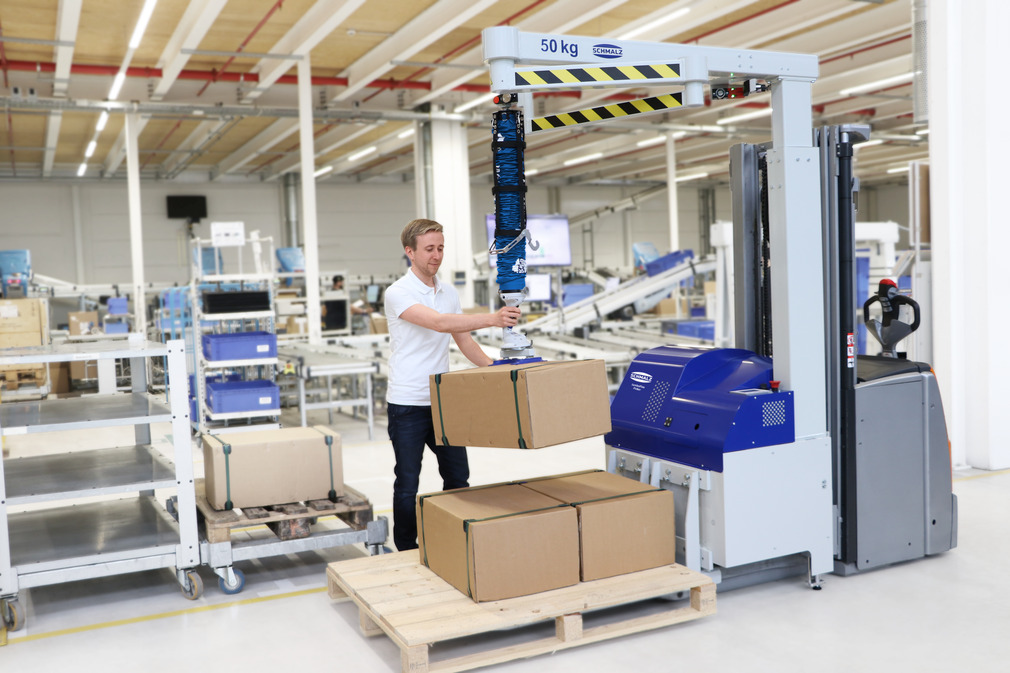DGUV regulations
The accident prevention regulations (UVV) are regulations of the German Social Accident Insurance (DGUV) that are based on the principles of the Occupational Safety and Health Act (ArbSchG) and define safety and health standards in the workplace. They serve to protect employees and prevent occupational accidents and illnesses. These regulations are often referred to as DGUV regulations.
Ergonomics at the workplace according to DGUV
In addition to the technical safety regulations, ergonomics in the workplace is a central component of the DGUV regulations. The aim is to reduce physical strain and design workplaces in such a way that employees remain healthy and productive in the long term. Legal principles such as the Load Handling Ordinance and the Workplace Ordinance, which contain clear requirements for working ergonomically, also play an important role here.
For practical implementation, the DGUV provides supplementary checklists for risk assessment. These help to systematically evaluate ergonomic risks such as lifting, carrying, pulling, pushing or forced postures and to derive suitable measures.
Important DGUV regulations for cranes, chain hoists and vacuum load handling attachments
DGUV Regulation 1: Principles of prevention
This regulation defines the general safety and health measures that must be implemented in every operation.
DGUV Regulation 3: Electrical systems and equipment
This regulation governs the safe use of electrical systems and equipment. It is crucial as many cranes, chain hoists and vacuum load handling attachments are electrical. Regular investigations and maintenance are required to minimize electrical hazards.
DGUV regulation 52: Cranes
This regulation deals with the safe operation of cranes. It includes general provisions, construction and equipment requirements and operating regulations. Crane systems must be regularly inspected and maintained to prevent accidents and breakdowns.
DGUV regulation 54: Winches, lifting and pulling equipment
This regulation concerns the safety of winches, lifting and pulling equipment, including chain hoists, Rope Balancers and wire rope hoists. A chain hoist is a hoist in which a chain is used as the load-bearing device. It is used for lifting and lowering freely movable loads. Rope balancers and wire rope hoists are handling devices that lift and lower loads using a rope drive. The regulation specifies requirements for the construction, equipment and operation of these devices in order to ensure safety when lifting and moving loads.
DGUV Rule 109-017: Operation of load handling attachments and slings in hoist operation
This rule contains specific requirements for the safe use and operation of work equipment. It is relevant to ensure that all devices and machines are safe to operate and comply with legal requirements. In the Schmalz context, this regulation applies in particular to the vacuum tube lifter Jumbo and the vacuum lifting device VacuMaster. To ensure operator safety and prevent accidents, these lifting devices must meet the highest safety standards and be regularly inspected and maintained.
DGUV principle 309-001: Investigation of cranes
This principle provides detailed instructions for the investigation of cranes. It is important to ensure the safety and reliability of crane systems.
Accident prevention regulations for Schmalz
At Schmalz, we carry out the necessary investigations in accordance with the applicable accident prevention regulations (DGUV regulations). Our DIN ISO 9001:2015 certification confirms our compliance with high quality standards, which extends the service life of your cranes and lifting devices. At the same time, we make sure that our solutions are not only technically reliable, but also ergonomically designed to enable safe, healthy and efficient workplaces.
Related terms

Quality and Warranty
Schmalz has very high standards when it comes to the quality of its products and services. Numerous certifications in accordance with the DIN ISO standard attest to the quality of the products.

Maintenance and regular inspection
Preventive maintenance and regular inspections keep your system safe and ready.

